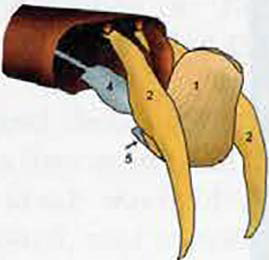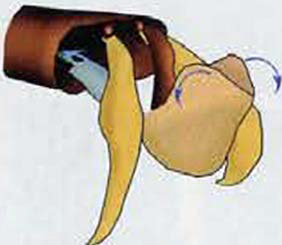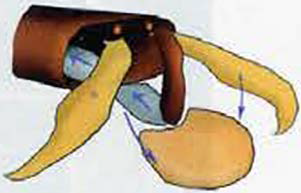By: Ian Stell
This article originally appeared in the Spring 2017 issue of BEEKeeping Your First Three Years
The short answer is: no, they do not. So how do they hold on to completely smooth vertical surfaces?
To answer this question we will need to look at their legs in detail.
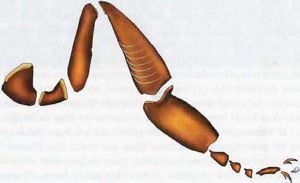 Figure 1 shows the 12 components of a bee’s rear leg. The number of segments in other legs is the same, although their shapes and functions are slightly different. From left to right the segments are: the coxa, trochanter, femur, tibia, basitarsus, three tarsomeres, pretarsus (foot), two pairs of claws (ungues) and the arolium. Only the first four contain the muscles which move the leg joints.
Figure 1 shows the 12 components of a bee’s rear leg. The number of segments in other legs is the same, although their shapes and functions are slightly different. From left to right the segments are: the coxa, trochanter, femur, tibia, basitarsus, three tarsomeres, pretarsus (foot), two pairs of claws (ungues) and the arolium. Only the first four contain the muscles which move the leg joints.
In considering the bee attachment to surfaces, we must focus on the last part of the leg, the thin part containing the three tarsomeres, the foot and its appendages. In Figure 2 we see that the leg ends with quite substantial claws (known as ungues), and between these an upturned structure, the arolium.
The claws each have a joint with the top of the pretarsus (foot) so that when the single tendon (the unguitractor tendon), running down to the foot is operated by its muscles in the femur and tibia the claws are pulled downwards (flexed) and their points hit the surface (Figure 3). If they fail to gain a grip they continue to move outwards and the arolium pivots around the lower end of the manubrium, and flattens out onto the surface. If we observe this happening under magnification we see that the flattened aroliurn attaches to the surface strongly, providing a strong anchoring point for the leg. So how does it grip on?
We only need to look at the surface of the arolium at high magnification to see that it is not a ‘sucker’ (Figure 4), it is not the right structure to create a cup shape and rely on a ‘vacuum’ to grip on. Instead it has a number of ribs with a fine raised network running over them. Recent work on geckos, small lizards capable of running across ceilings, has shown that their club-ended toes actually hold on using Van de Waal’s forces rather than suction.
These are electromagnetic forces produced between molecules close together. A similar process has been described in jumping spiders. It is likely that the same forces are at work when bees hang on surfaces. The size of these adhesive forces is small (Figure 5). ln attempting to quantify them, the adhesive pressure must be at least about 2 kPa for a bee to hang upside down by all six legs (a vacuum cleaner, by comparison, produces a suction; a negative pressure, of about 20 kPa). However it is likely that the maximum adhesion pressure is somewhat greater than this as one bee can easily support several others hanging from it.
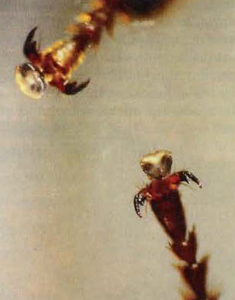 Although the ability to grip to smooth surfaces using the arolia is enough for one bee to support its own weight and one or two others, this is far less than the attachment that the claws are capable of. If the surface is rough enough then bees will grip using their claws (Figure 6) and the entire weight of a swarm is supported by the claws of those at the top gripping to a branch, and other bees gripping to each other.
Although the ability to grip to smooth surfaces using the arolia is enough for one bee to support its own weight and one or two others, this is far less than the attachment that the claws are capable of. If the surface is rough enough then bees will grip using their claws (Figure 6) and the entire weight of a swarm is supported by the claws of those at the top gripping to a branch, and other bees gripping to each other.
Ian Stell is an MD from the UK. He is an accomplished author, photographer, beekeeper and artist and the author of Understanding Bee Anatomy: A Full Color Guide.





